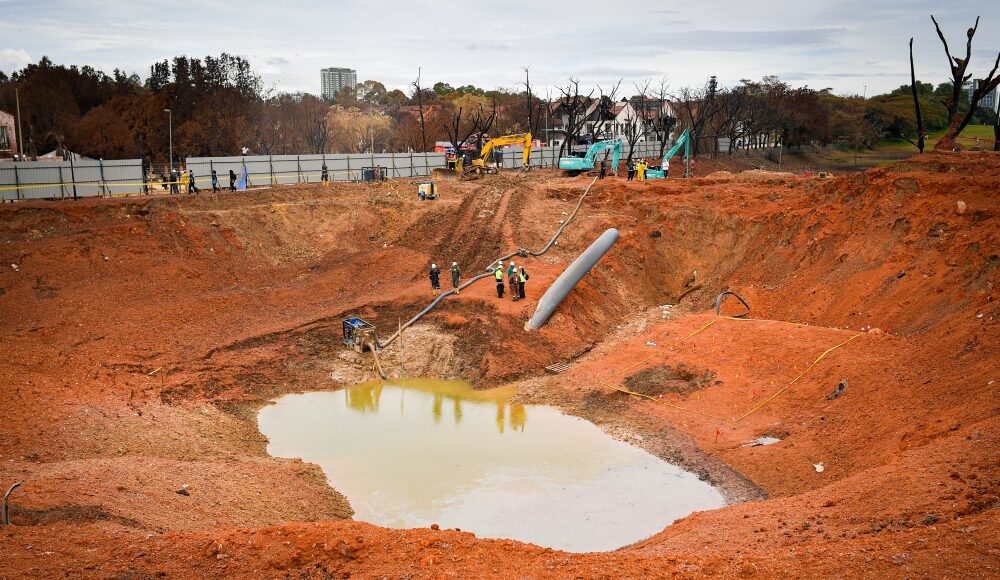APRIL 8 — In “Gas pipe inferno in Putra Heights: Who has statutory oversight based on expertise?” I wrote that there are laws and regulations on the installation of gas pipelines, which constitute only a part of the law and regulations on the supply of gas in the country.
The main law is contained in the Gas Supply Act 1993 (Act 501) (the Act). The regulations are to be found in the Gas Supply Regulations 1997 (PUA 287/1997) (the Regulations). Both Act and Regulations came into force on July 17, 1997.
In the light of media reports of Selangor Police Chief Datuk Hussein Omar Khan confirming that preliminary investigations indicated that earthworks were done just 30 metres away from the Putra Heights explosion site, let’s look at the provisions in the Regulations which regulate excavation work in the vicinity of a gas installation.
The provisions can be found in Part III of the Regulations (on Gas Installation). The relevant provisions pertaining to excavation work are described in the following paragraphs.
A person who intends to commence excavation work must, in not less than four working days prior to the day of the proposed excavation, request in writing from the licensee or his agent who is operating in the area for an information on the location of the underground gas installation in the vicinity of the proposed excavation.
A licensee is a person licensed under the Act to shall carry out any activity of: (a) import into regasification terminal; (b) regasification of gas; (c) shipping of gas; (d) transportation of gas; (e) distribution of gas; (f) retail of gas; or (g) use of gas.
Upon a request made, the licensee or his agent must indicate the location of the gas installation owned, operated or registered by the licensee or his agent in the area where the excavation is intended to be made.
The licensee or his agent must also provide the information requested under 24 hours prior to the day of the proposed excavation.
The person must not commence excavation work until he ascertains that: (a) the request for information has been made; and (b) the information on the location of gas installation has been given.
Where a person who intends to carry out excavation work is aware that a gas installation is in the vicinity of the proposed place of excavation, he must notify the licensee or his agents operating in that area of his intention to excavate in the area in not less than three working days before commencing excavation.
Excavation work in the vicinity of a gas installation must be carried out under the supervision of the relevant competent person.
A competent person is a person who holds a certificate of competency issued by the Energy Commission established under the Energy Commission Act 2001 (Act 601) or any other equivalent certificate issued by any government body to perform work in accordance with the restrictions, if any, stated in the certificate.
Excavation work in the vicinity of a gas installation must be carried out under the supervision of the relevant competent person. — Bernama pic
The indicated location of a gas installation must be confirmed by the excavator by means of hand digging and he must expose the gas installation at a sufficient number of locations to determine its exact position and depth before using mechanised excavation equipment for any purpose other than breaking the surface cover.
No person is allowed to probe into the earth by using pointed tools in order to locate a gas installation.
Where an excavator finds that the gas installation is not within a prelocated or marked gas installation zone, he must notify the licensee or his agent of that fact.
The licensee or his agent must then assist the excavator to locate and expose the gas installation and must prohibit mechanised excavation to be carried out in the vicinity until the gas installation has been located and exposed.
It is the responsibility of the excavator, as the work progresses, to maintain and keep visible the markings placed by the licensee or his agent to identify the location of the gas installation.
Where the maintenance of the markings is not feasible, the excavator must make other arrangements to ensure that the location of the gas installation is otherwise noticeable by a person.
In any case, no person is allowed to carry out excavation work or cause excavation work to be carried out in a manner which is damaging or dangerous to a gas installation.
An authorised officer may at any time order a person to stop excavating near a gas installation if he considers that the excavation may damage the gas installation or cause the leakage of gas. An authorised person is any public officer or officer of the Energy Commission.
The authorised officer may require a licensee, installer or the owner of a gas installation to cut out or repair a gas pipeline, whether metallic or non-metallic, which is considered to be faulty.
Any person who contravenes the provisions in the Regulations is guilty of an offence.
The above informs us that proper approval in 2022 for the development project near the site of the gas pipeline inferno, including approval from Petronas to access the Right-of-Way (ROW) along the Indah Water Konsortium (IWK) route, alone is not sufficient.
There must be compliance with the Regulations, failing which a person is guilty of an offence.
* This is the personal opinion of the writer or publication and does not necessarily represent the views of Malay Mail.





